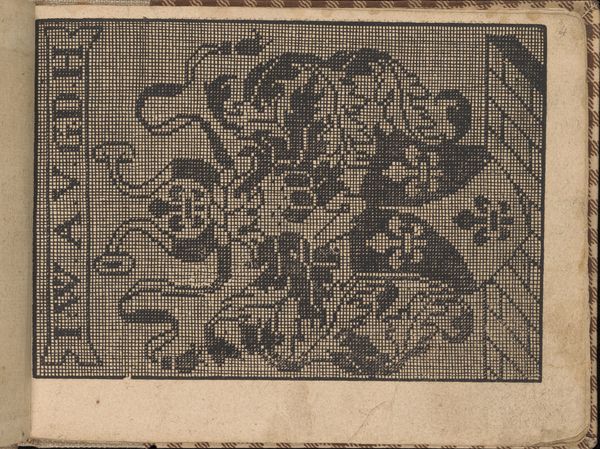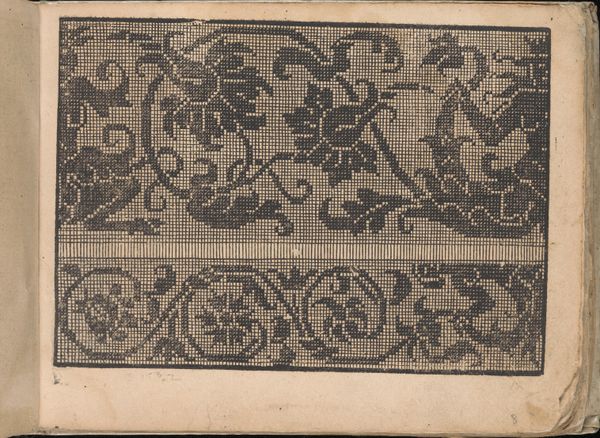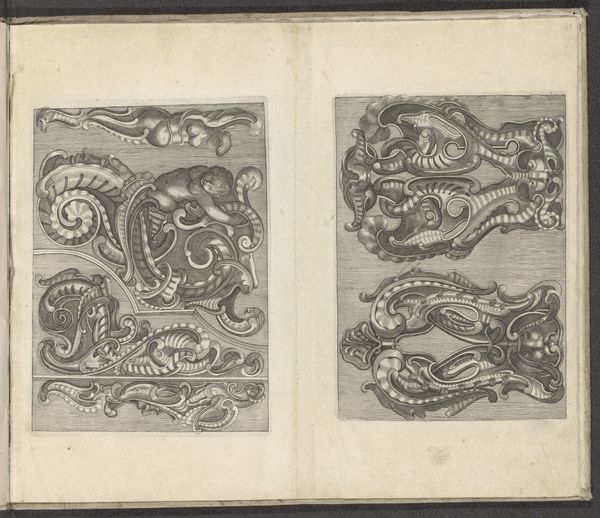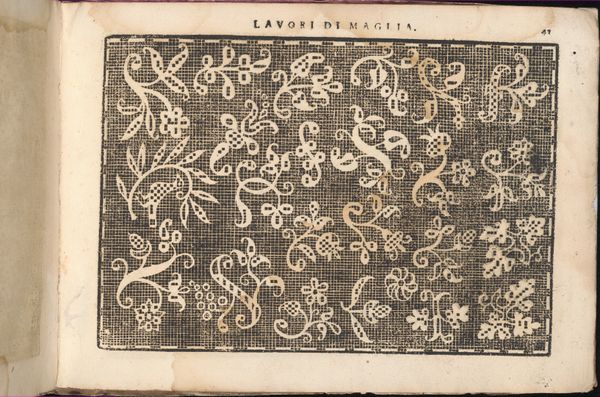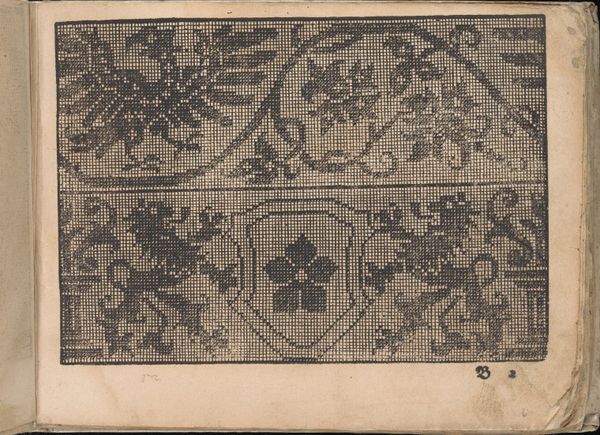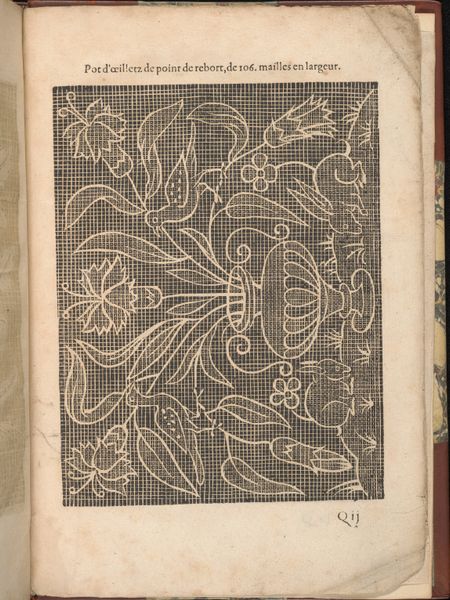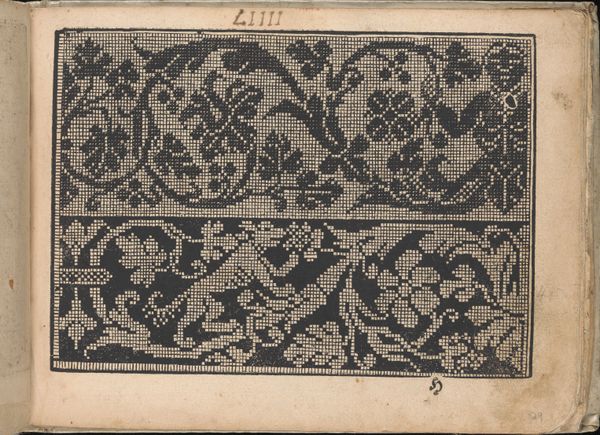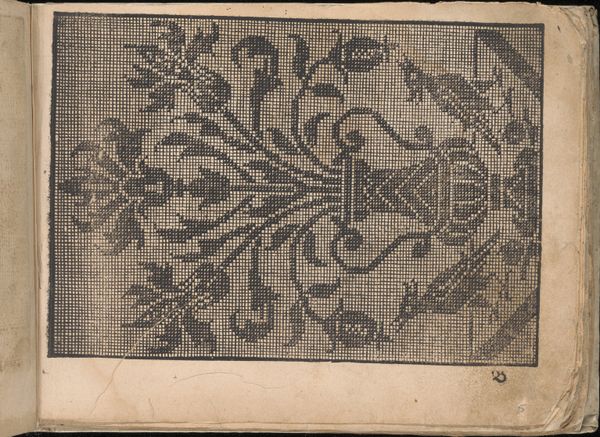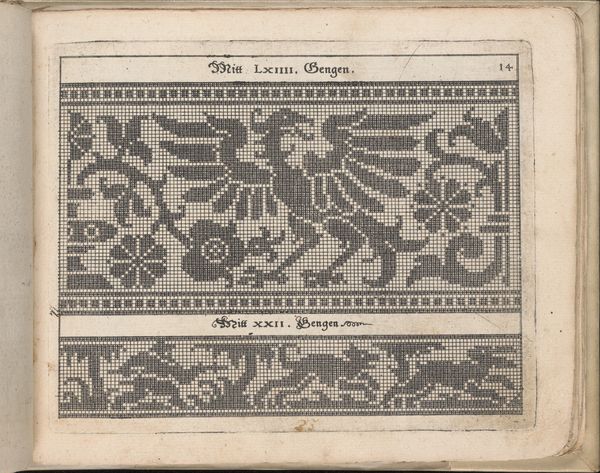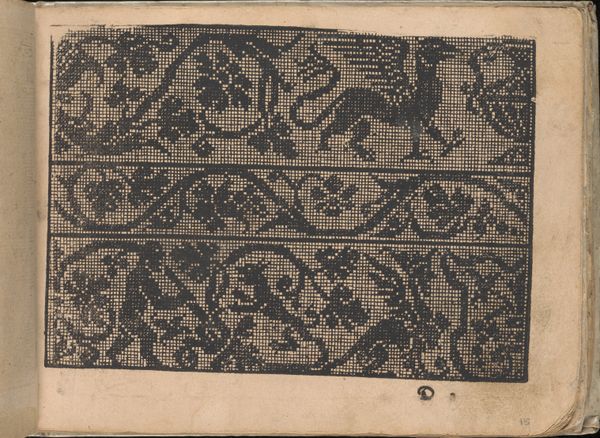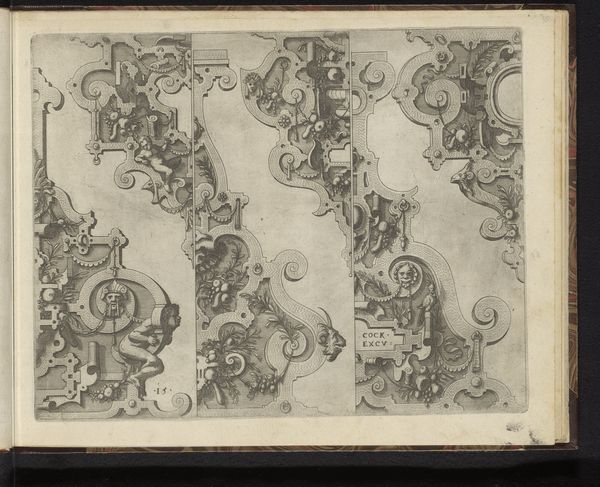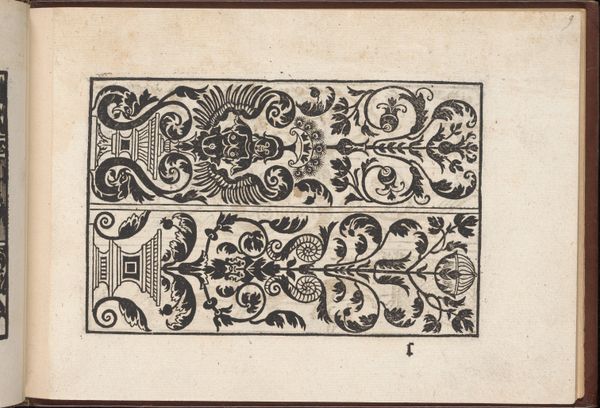
drawing, graphic-art, ornament, print, paper, woodcut
#
drawing
#
graphic-art
#
ornament
#
pen drawing
# print
#
paper
#
11_renaissance
#
woodcut
#
line
#
northern-renaissance
Dimensions: Overall: 6 1/8 x 7 7/8 in. (15.5 x 20 cm)
Copyright: Public Domain
Editor: This is a page from Bernhard Jobin’s "Neu künstlich Modelbuch," created in 1598. It’s a woodcut, a print on paper showcasing these really intricate ornamental designs. I find the almost pixelated effect quite fascinating. It looks incredibly detailed, almost like a very early computer graphic! What stands out to you? Curator: It’s a bit like staring into a wellspring of ideas, isn’t it? For me, the wonder resides in imagining the hands, the patient dedication involved. Each line, so meticulously carved, hints at a slower, more contemplative era. These pattern books, "Modelbuchs", were meant as guides, sparking creativity in artisans—needleworkers, weavers, you name it. Editor: So, they’re like, Renaissance Pinterest boards? Curator: Precisely! A curated collection of visual inspiration, allowing for adaptation and personalization. Look at how the artist employs a stark, linear style characteristic of the Northern Renaissance. It’s almost austere, yet full of promise. I’m curious, do you find echoes of anything familiar in those abstract forms? Editor: I see some flower shapes and maybe some kind of heraldic crest, like family symbols, but very abstracted. Curator: Excellent observation. This was a period of immense artistic and social change. The designs walk the line between tradition and nascent modernism. But beyond historical analysis, do you find a personal connection to it? Does this artwork evoke anything specific within *you*? Editor: I think I can appreciate how useful it would be. And I see your point: knowing its intention—to inspire—makes me more receptive to it, like it is not just a flat image. Curator: Absolutely. And in the act of observing, interpreting, perhaps even attempting to replicate some fragment of it, we continue that creative lineage, drawing from the same well of inspiration across centuries.
Comments
No comments
Be the first to comment and join the conversation on the ultimate creative platform.
